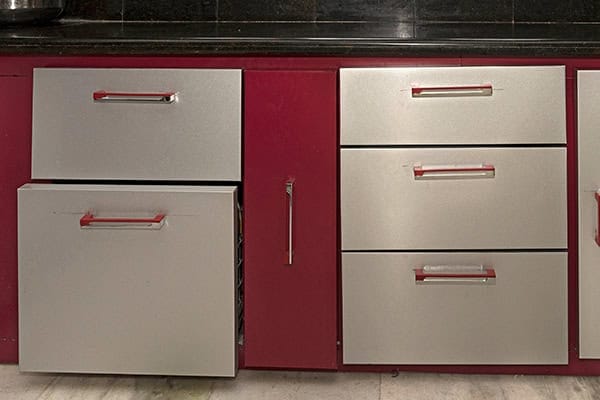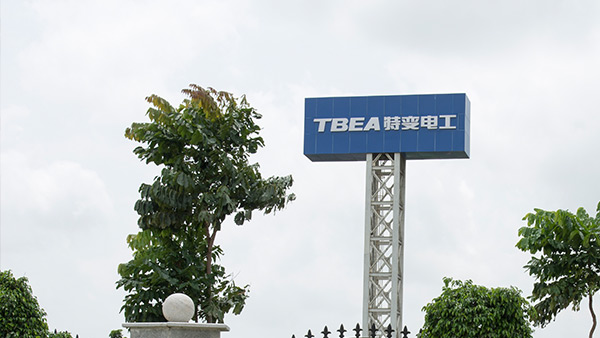Often described as the heart of a home, the kitchen holds a central place in household living. When it comes to shaping this vital hub, the selection of materials for crafting cabinets assumes a fundamental role, impacting both functionality and visual appeal. Kitchen cabinets transcend mere storage; they serve as pivotal elements that define the style and endurance of your kitchen environment. Choosing the appropriate materials for your kitchen cabinets is a decision that encompasses a fusion of practicality, design inclinations, and enduring worth While exploring materials for kitchen cabinets, you will have to delve into the diverse options like ACP board available, understanding their unique attributes, advantages, and considerations. Whether you seek timeless elegance, modern minimalism, or enduring strength, this journey through materials for kitchen cabinets will guide you in making an informed choice for a culinary space that truly suits your needs and reflects your personal style.
Some Popular Options for Making Kitchen Cabinets
Today’s market offers a plethora of materials for kitchen cabinets and home design, providing a wide array of options to cater to diverse tastes and preferences Let’s take a look at some of the common and popular options available for kitchen cabinets:
Solid Wood
Cabinets made with solid wood exude a timeless and traditional charm. Varieties like oak, maple, cherry, and walnut are popular choices. They offer exceptional durability and can withstand years of use. Solid wood cabinets can be refinished and repaired easily, allowing for a long lifespan. However, they can be more expensive than other materials and may be susceptible to warping or cracking in environments with fluctuating humidity levels. However, with Aluwall acp board is designed in wooden finishes that have the durability of aluminium with the perfect finish.
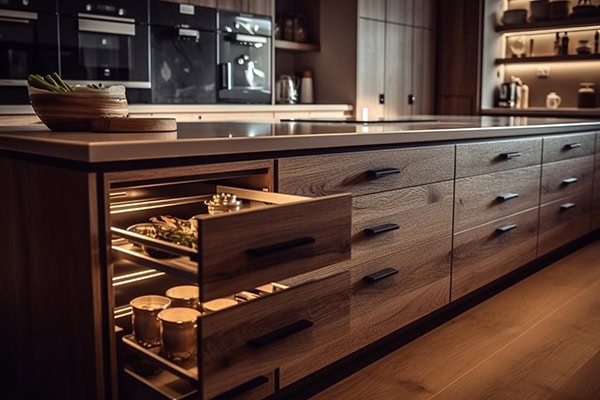
Plywood
Plywood is a versatile and durable material often used for cabinet construction. It consists of multiple layers of wood veneer glued together, creating a strong and stable product. Plywood is less prone to warping and cracking compared to solid wood, making it a reliable choice for kitchen cabinets. It can be finished with various veneers or laminates to achieve different styles.
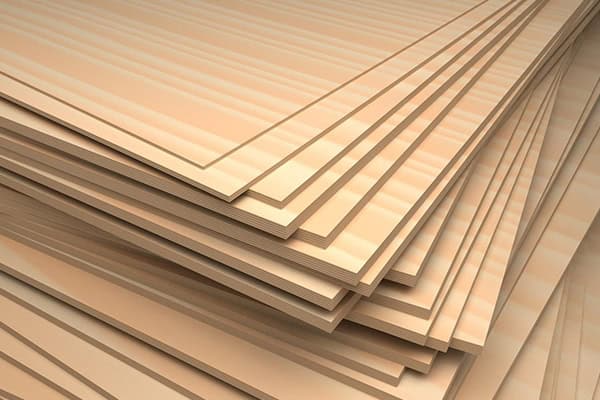
MDF (Medium-Density Fiberboard)
Engineered wood products are gaining popularity in the market and MDF is one such product. It is made by compressing wood fibres with adhesive. It’s an excellent choice for painted cabinets because it provides a smooth, uniform surface that doesn’t have the grain patterns found in natural wood. MDF is cost-effective and resistant to moisture, but it’s not as durable as solid wood or plywood and may not be suitable for heavy-use kitchens.
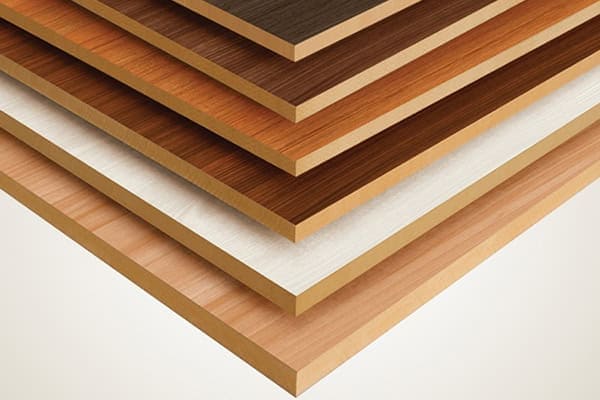
Particleboard
Particleboard is another engineered wood product, composed of wood particles bonded with adhesive. It’s one of the most budget-friendly options for kitchen cabinets but lacks the strength and durability of plywood or solid wood. Particleboard cabinets are often used in lower-end kitchen installations and may not hold up well in high-moisture environments.
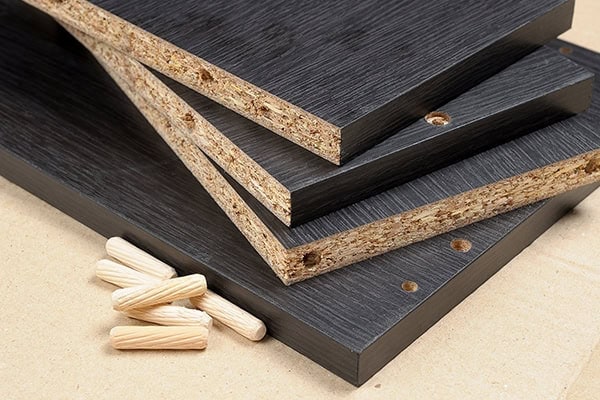
Laminate
When it comes to laminate, Laminate cabinets it is made by covering a base material, often particleboard or MDF, with a layer of decorative laminate. This material is highly resistant to stains, scratches, and moisture, making it a practical choice for busy kitchens. Laminate cabinets come in a wide array of colours and patterns, offering ample design flexibility.

Aluminium Composite Panels in Kitchen Cabinets
Aluwall ACP sheets is a versatile material that is not only gaining popularity as a building cladding material but is also used in interiors as a home upgrading item. Aluminium composite panels stand out as kitchen cabinet material, offering durability, aesthetic liberty, flexibility and most importantly its value for money.
ACP sheets for modular kitchen
The choice of kitchen cabinet material should align with your style preferences, budget, and how you plan to use your kitchen. Each material has its unique characteristics, so consider your priorities in terms of aesthetics, durability, and maintenance when making your decision.
